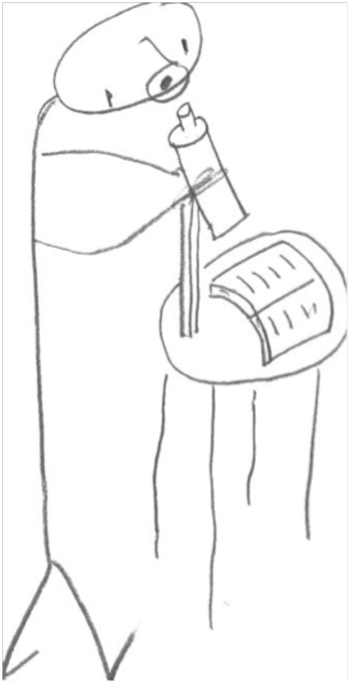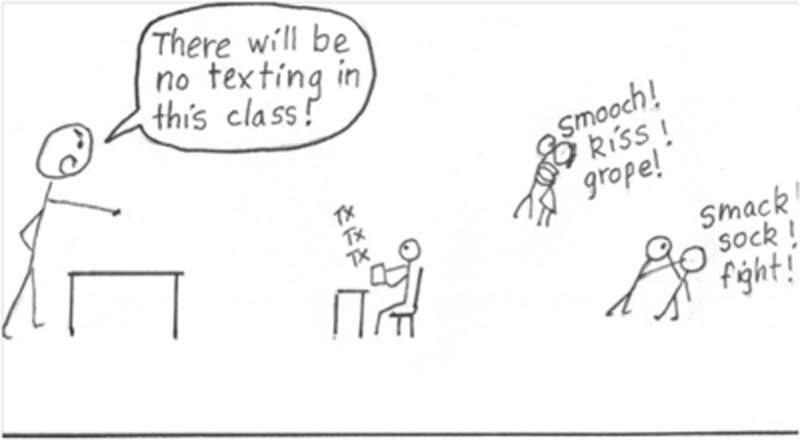
Introduction
Reading analytically is not an empirical science but it can be approached in a methodical way, whether for analysis of brief passages or full-length works such as novels. In the case of a larger text, part of the task is to choose the individual passages for closer analysis. This depends upon the topic which has been assigned or selected. These reading strategies can be adapted to literary and non-literary texts.
Survey the Ground
Like the archaeologist who marks out a grid on the site to be investigated, we can start by dividing the analytical task into smaller tasks. For example:
- number the paragraphs, verses, or other components (use common sense about this--for very close analysis it may be useful to number the paragraphs and the individual sentences--eg 2.5 meaning sentence 5 of paragraph 2; but for most purposes the division and numbering can be simpler)
- identify the purpose of each part; is the structure of the text apparent? for example, where are the beginning, middle and end? is there a climax or conclusion? are there digressions, flashbacks, contrary views? for fiction, which events are given as scenes with character dialogue and which events are summarized, and why?
Ask the Relevant Analytical Questions: 5W + H + C
The interpretation of texts cannot be arrived at by a formula. 5W + H + C is not really a formula but simply a reminder about some of the important questions to ask when studying a text:
5W:
- Who? -- characters (flat/round?), motivations, people mentioned, narrator's voice...?
- What? -- action, plot, climax...?
- Where? -- setting, geography, landscapes/interiors...?
- When? -- timeline of the text, flashbacks, foreshadowings...?
- Why? -- themes/underlying or implicit ideas/morals and messages...?
Identification of theme(s) is a crucial step towards the writing of effective essays. This shows the ability of the reader to move from the concrete level of the text to a more general, abstract level. Or in other terms, it shows the ability to move from "subject" (what happens) to "theme" (what the action means). For example, the famous race between the hare and the tortoise is the subject of that fable, but the themes are more abstract ideas such as "slow and steady is the best way in life," or "pride comes before a fall," or "the role of chance in life." Most readers will agree about what the subject of a story is, but the themes can be matters of debate.
Another way to think about theme is to recognize that these more general and abstract ideas are often ancient, and they may be discovered in many different texts. A useful memory device for the classification of the content of a text is the baseball diamond diagram:
-1st base -- the natural, material world is a major subject in many texts; is nature presented as friendly or hostile? is it beautiful or desolate? should it be exploited or treated with respect?
- 2nd base -- the individual's experience is the focus of many texts; does it reflect a contrast of innocence and experience? does the character reflect the struggle of good and evil? are romantic and realistic views contrasted? are there contrasts of pride and humility? decision and indecision?
- 3rd base -- both literary and non-literary texts can be concerned with the relationship of individuals and their societies; is there a tension or struggle between conformity and rebellion? is the political system hierarchical or democratic? is the society based on class structure or equality? is there patriarchy or gender equality?
- home base -- many texts explore cosmic or spiritual questions: does life have meaning or is it meaningless, a "tale told by and idiot"? are humans ruled by fate or do we have free will? is there a providential order to events or is everything random chance? is the ultimate basis for moral choice self-interest or a loving Creator?
Notice that many of these theme statements are binary rather than singular. The text shows us the tension or the conflict between the two poles of the binary opposition or dialectic. This is one reason why Venn diagrams (overlapping circles) and line diagrams can be useful tools for analysis.
H
The "H" or "How?" part of the formula refers to analytical questions we might ask about the way a text is written, such as:
- how is the text organized? are there clear divisions?
- are any particular words used (diction), such as specialist terms, dialect words, or choices which could reflect some thematic idea, like Sherlock Holmes' saying that he will "enumerate" the reasons to Watson, instead of just telling him the reasons
- are there metaphorical comparisons, in the form of metaphors, similes or personification?
- are there private or public or contextual symbols?
- in fiction, what is the narrative point-of-view (who tells the story)?
-does the passage use rhythm or rhyme? this is most common in poetry but may also apply to other texts--a book in another subject may use its own special devices to convey its ideas, such as subtitles, bold text, graphs, or illustrations
- what rhetorical strategies does the text use to persuade us or engage us?
C
The Context question prompts us to ask about other material, beyond the text itself, which may be helpful for analysis and interpretation:
- are there words to be looked up in the dictionary?
- is the author's biography relevant?
- is the history of the period relevant?
- are there particular topics and issues which might repay some research?
- what do the scholarly writers say about this text and its significance?
-are there particular theoretical approaches which may be useful? -- for example, to analyze a text from a feminist perspective, or a post-colonial perspective
Why Readerology
Some tasks in life can seem overwhelming and mysterious. Such tasks certainly include the interpretation of challenging texts. Although the questions outlined here are not an empirical science, as noted above, it can be useful to have a method for dividing the big and overwhelming job into smaller and more manageable tasks.
They are not the whole story either. Also important is intuition. Even science is sometimes not scientific, when it involves the researcher's intuition and imagination about where to focus and how to interpret results. Of course, this means that our typical idea of doing science is probably too narrow. However, the results of a scientific study will be expected to be empirically verifiable, and the results of an intuitive leap about interpretation of a text will be expected to have both textual and contextual support.
To follow a protocol or a methodology will not guarantee success in interpretation and in writing essays based on these interpretations. Think of the athlete who trains for a long period following a methodical system. This will not guarantee success in the game or the event. However, it will provide a solid base, a platform, from which a successful performance is more likely. The skill of analytical reading can transfer from literature to other areas, and can help us do more effective work in our respective fields.

|


